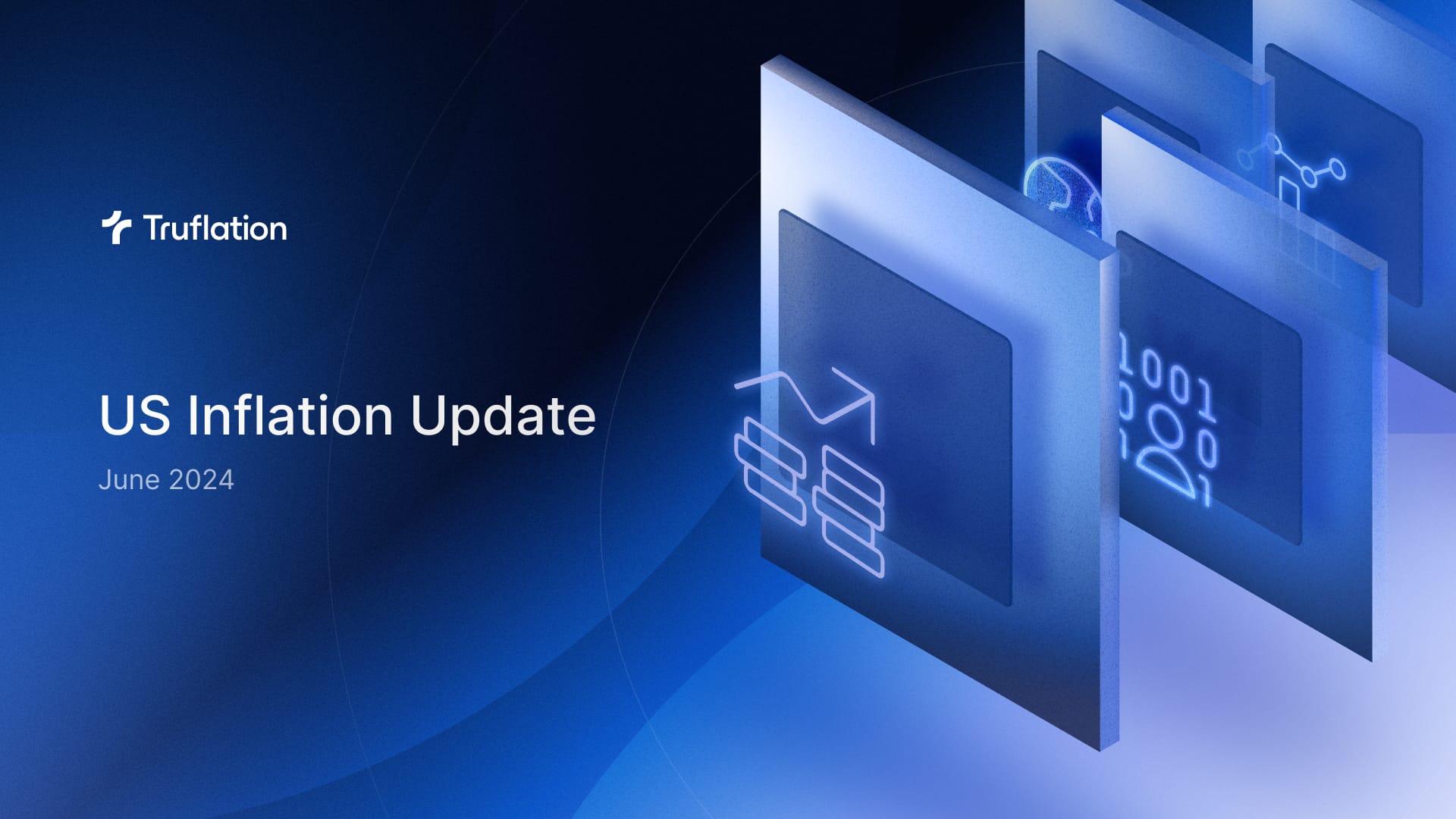Public Peek: Truflation US Inflation Update for June 2024

The following is a public peek at our exclusive monthly CPI update, available in full by subscription, here.
Recent inflation trends
Inflation has been hanging around much longer than expected and has held steady since the beginning of the year. In fact, it has ticked up marginally from 3.1% year-over-year (YoY) in January to 3.3% in May – though over the last few months, it has begun cooling again, down from 3.5% in March to 3.4% in April. Overall, though, it appears elevated inflation has yet to disappear.
Against the background of this slow gradual decline in price growth, the Fed has signaled that it will cut interest rates just once this year. In contrast, in March, officials expected to drop rates three times this year. However, with inflation remaining above the 2% target and only modest progress on taming it, policymakers remain cautious. It is therefore likely that, without significant progress on inflation, we will see fewer interest rate cuts this year (one or two) – and not significant ones at that. In addition, this is not likely to happen until after the summer at the earliest.
Read the Entire June 2024 Inflation Update
The US employment market remains robust, with the number of job openings holding steady at 8.1 million on the last business day of May, as reported by the BLS Job Openings and Labor Turnover Survey (JOLTS). The number of hires and separations saw little change. This suggests that demand for labor has been holding steady as businesses take a cautious approach to hiring new workers.
In addition, the most recent data shows that US employers added 206,000 jobs in June, marking another healthy month and coming in above expectations of 190,000. This, once again, displays the US economy’s ability to withstand continually high interest rates due to its strong consumer-driven economy. Jobs growth in May did get revised down from 272,000 to 218,000, but this still marks a strong gain.
The majority of the new jobs continued to be created in government, healthcare, social assistance and construction. The overall unemployment rate ticked up only slightly from 4.0% to a still-low 4.1%; this highlights the difficult position the Fed finds itself in. It is trying to react to the data, while at the same time not overreacting to it – all while the ECB and the Bank of Canada have already begun cutting interest rates.
Economic activity in the manufacturing sector contracted in June for the third consecutive month and the 19th time in the last 20 months – with just one month posting an increase. The Manufacturing PMI fell 0.2 points to 48.5 in June from 48.7 in May.
But this hasn’t affected purchasing behavior, as monthly retail sales saw a marginal uptick in May with a 0.1% MoM growth – up from a decline of -0.2% in April. This still marks a slowdown from February and March, when retail sales grew by 0.4% MoM respectively, but YTD spending growth remains healthy at 2.1%.
If we look at consumer spending, which accounts for more than two-thirds of US economic activity, we have seen an increase of 0.25% MoM in May, down from a 0.7% MoM increase in March but up from 0.14% in April. Clearly, consumers are feeling the pinch of higher prices, and it finally appears that spending might be cooling, which is encouraging news for a slowdown in inflation.
Read the Entire June 2024 Inflation Update
Coupled with wage growth continuing to slow down to 4.87% while savings rates have increased marginally to 3.96%, this might just mean consumers are taking a breather and preparing for better times ahead.
However, to definitively bring inflation back down to the 2% target without tipping the economy into a recession, policymakers will need to continue their efforts to reel in consumer demand.
Chart 1: US Personal Consumption
Source: Bureau of Economic Analysis, Personal Income and Outlay Report
In June, we also saw a marginal increase in credit card delinquencies, from 3.07% to 3.16%. This continues to suggest that the pressure of higher interest rates is taking its toll.

